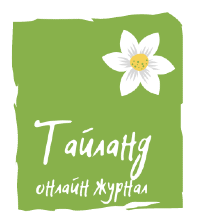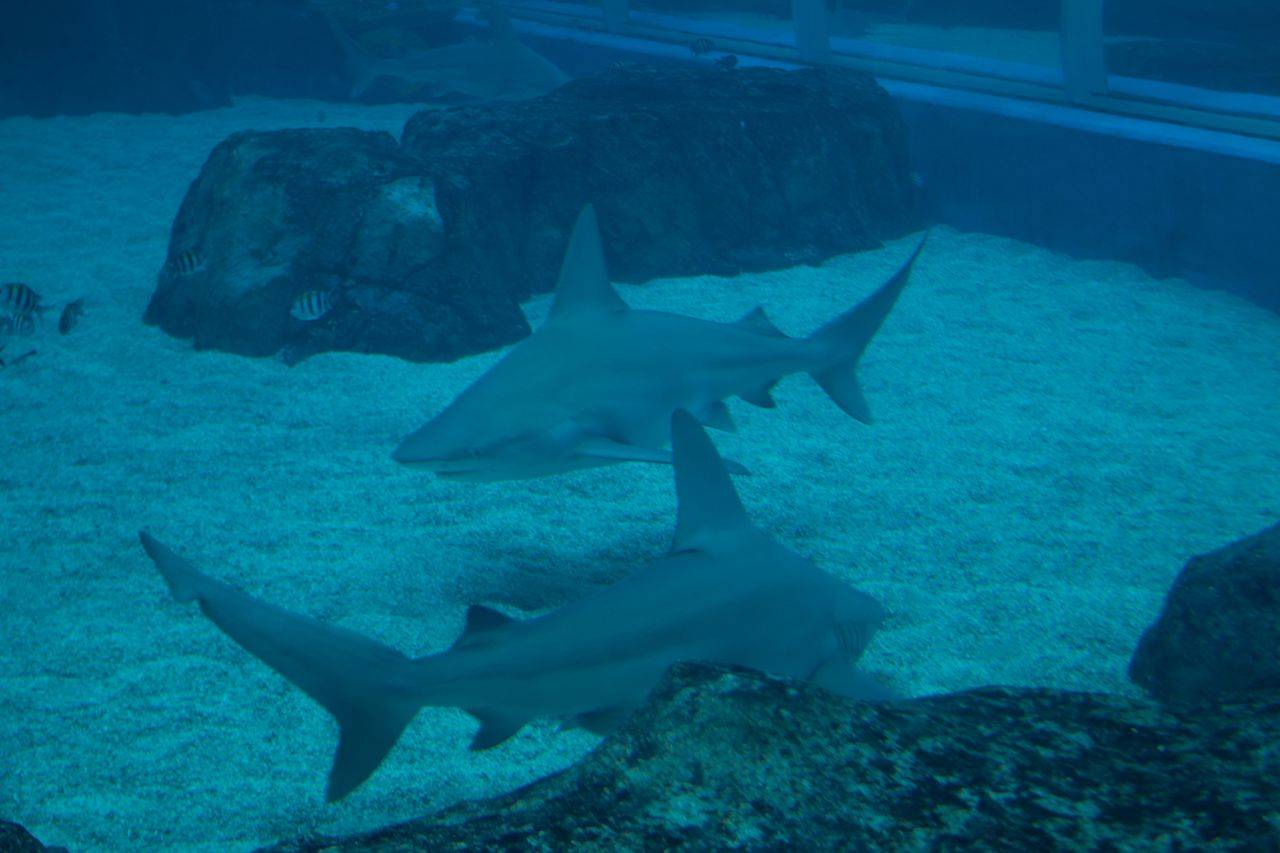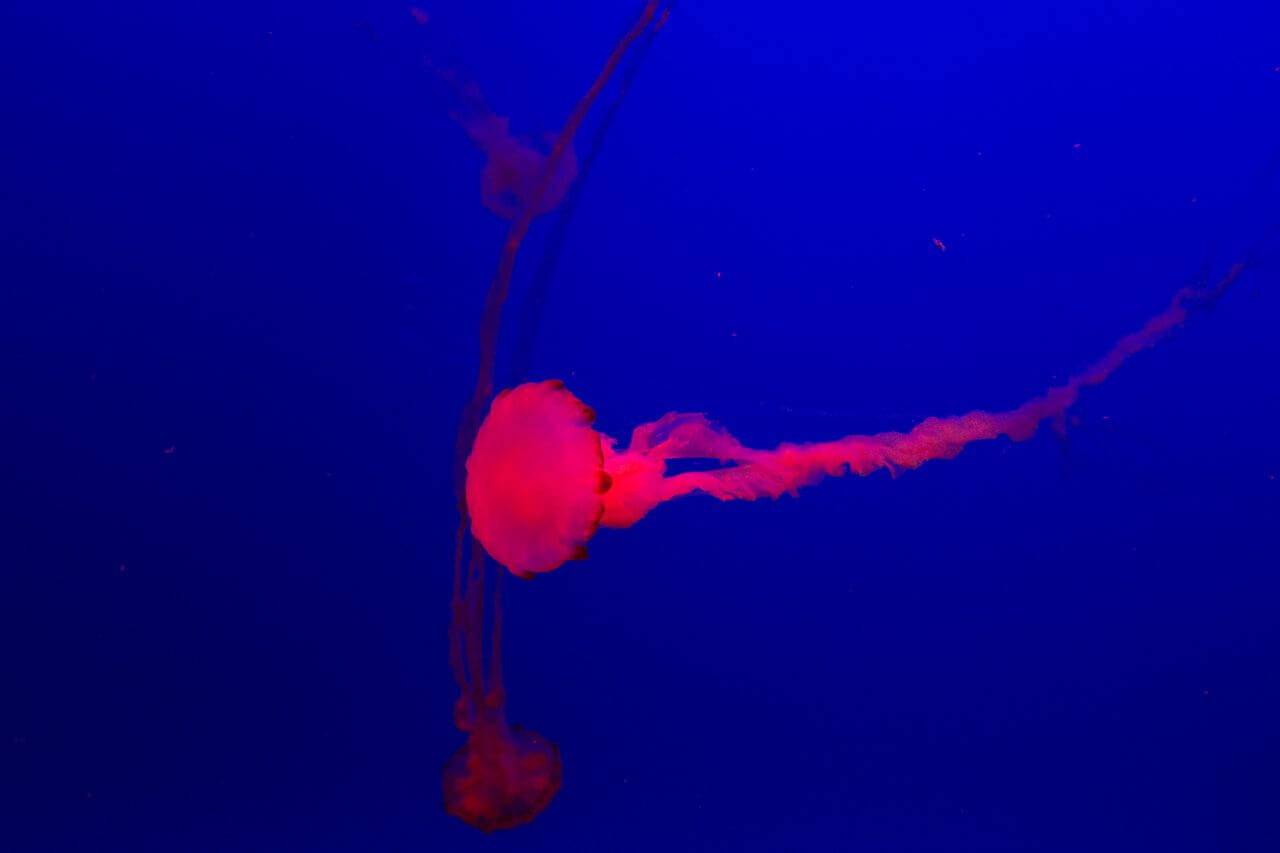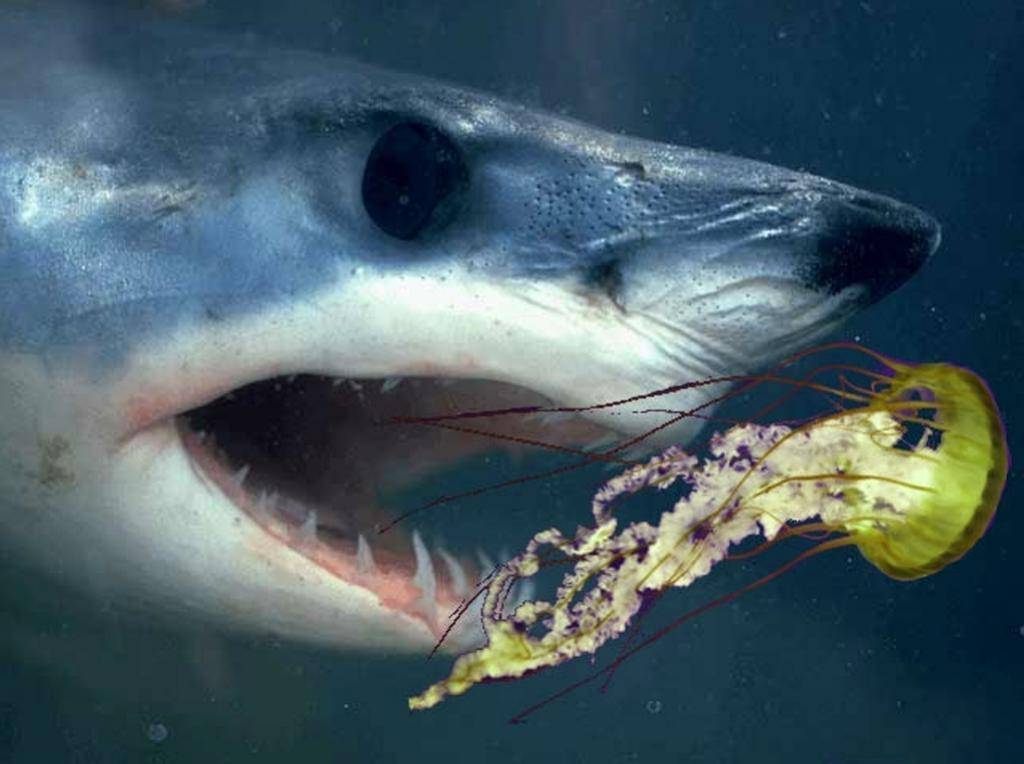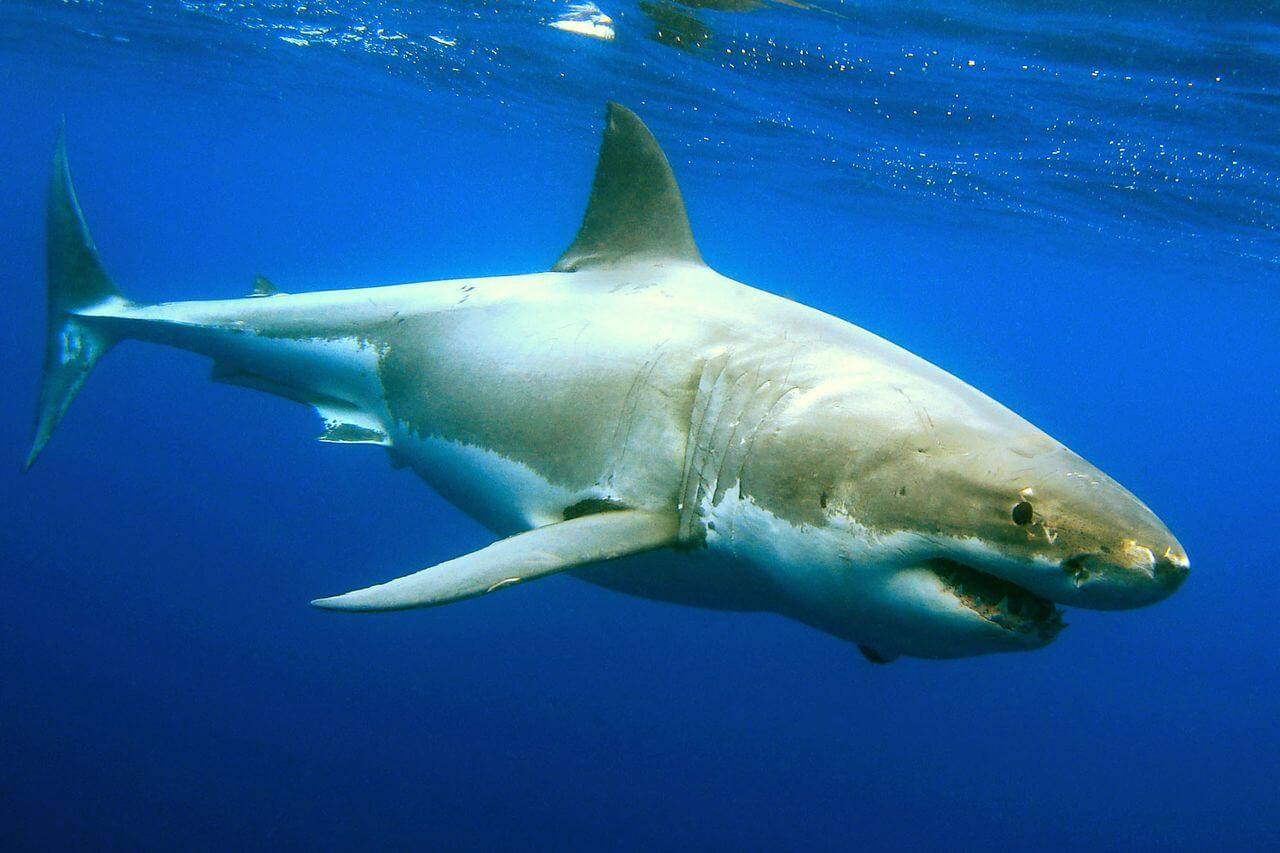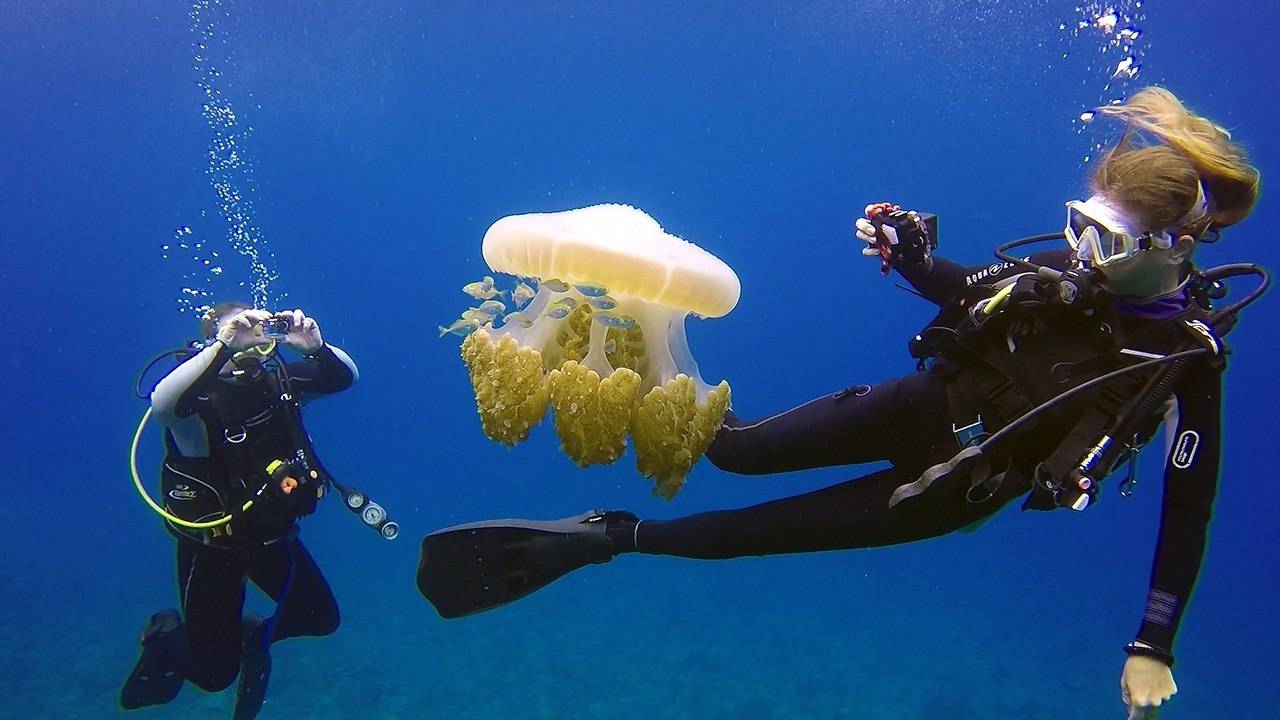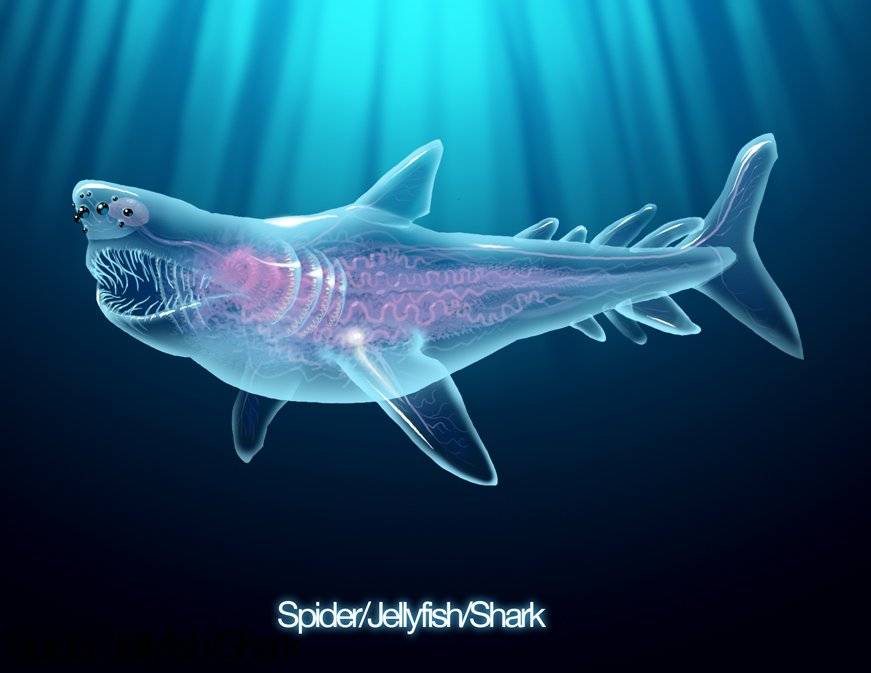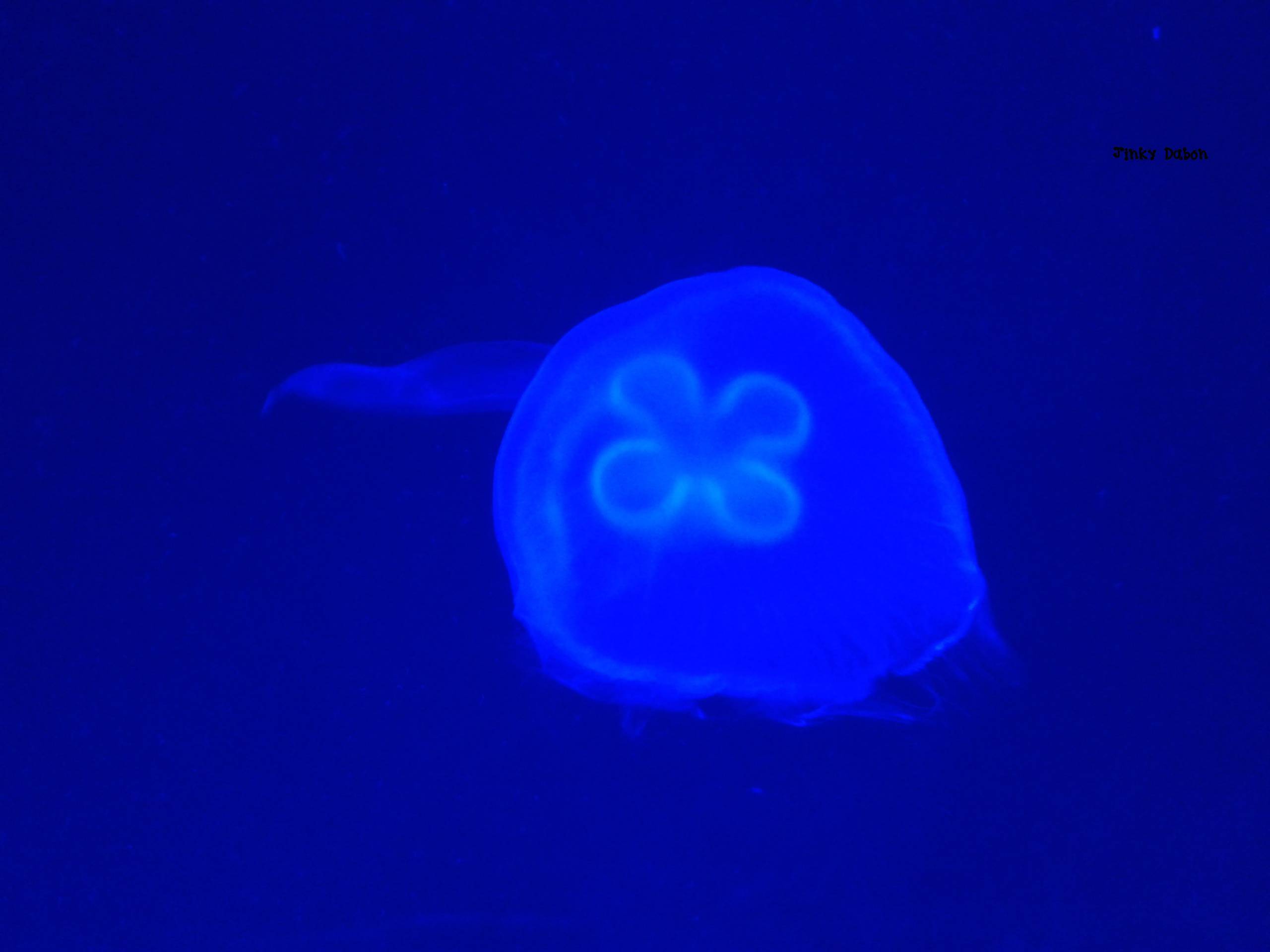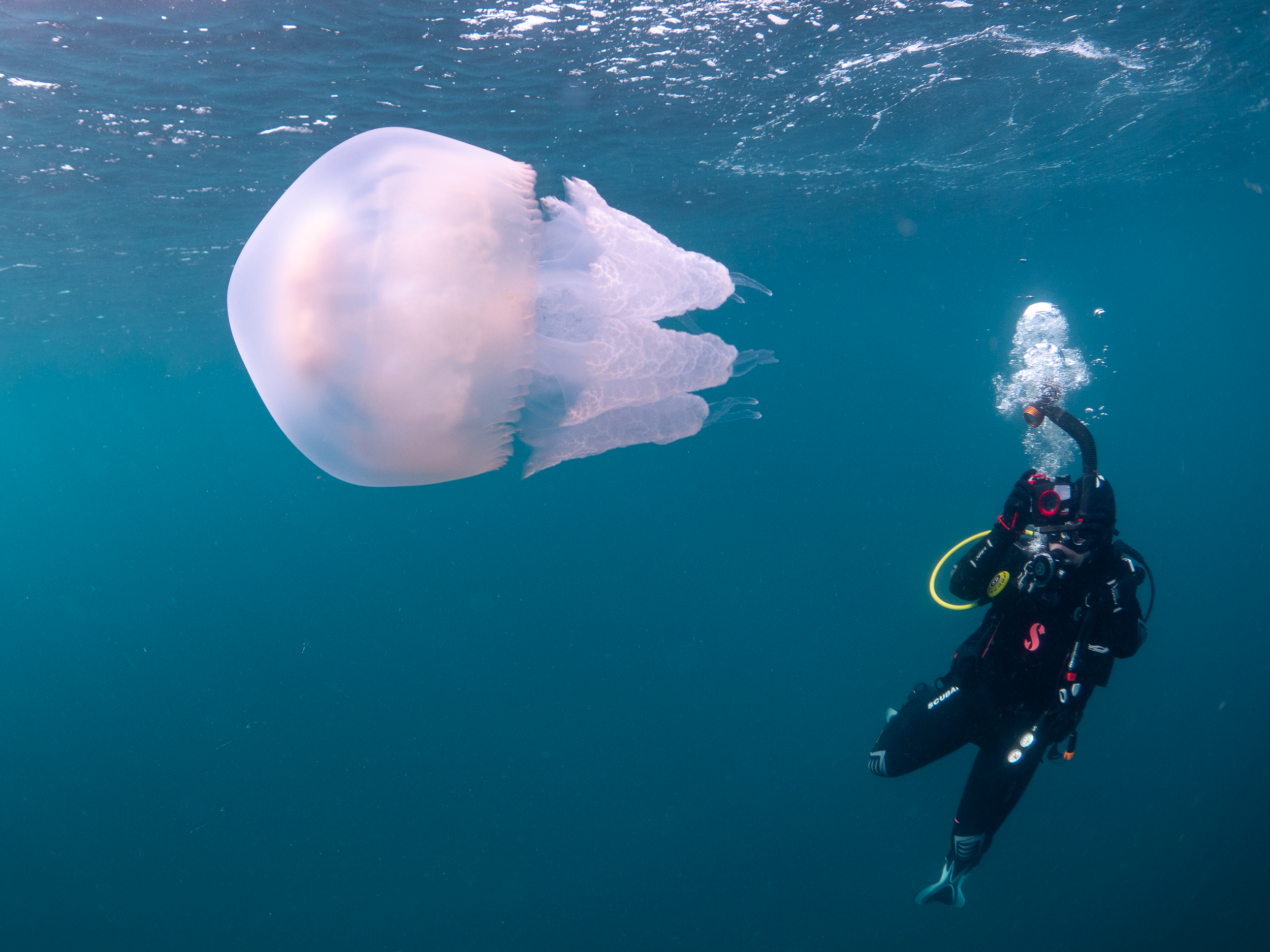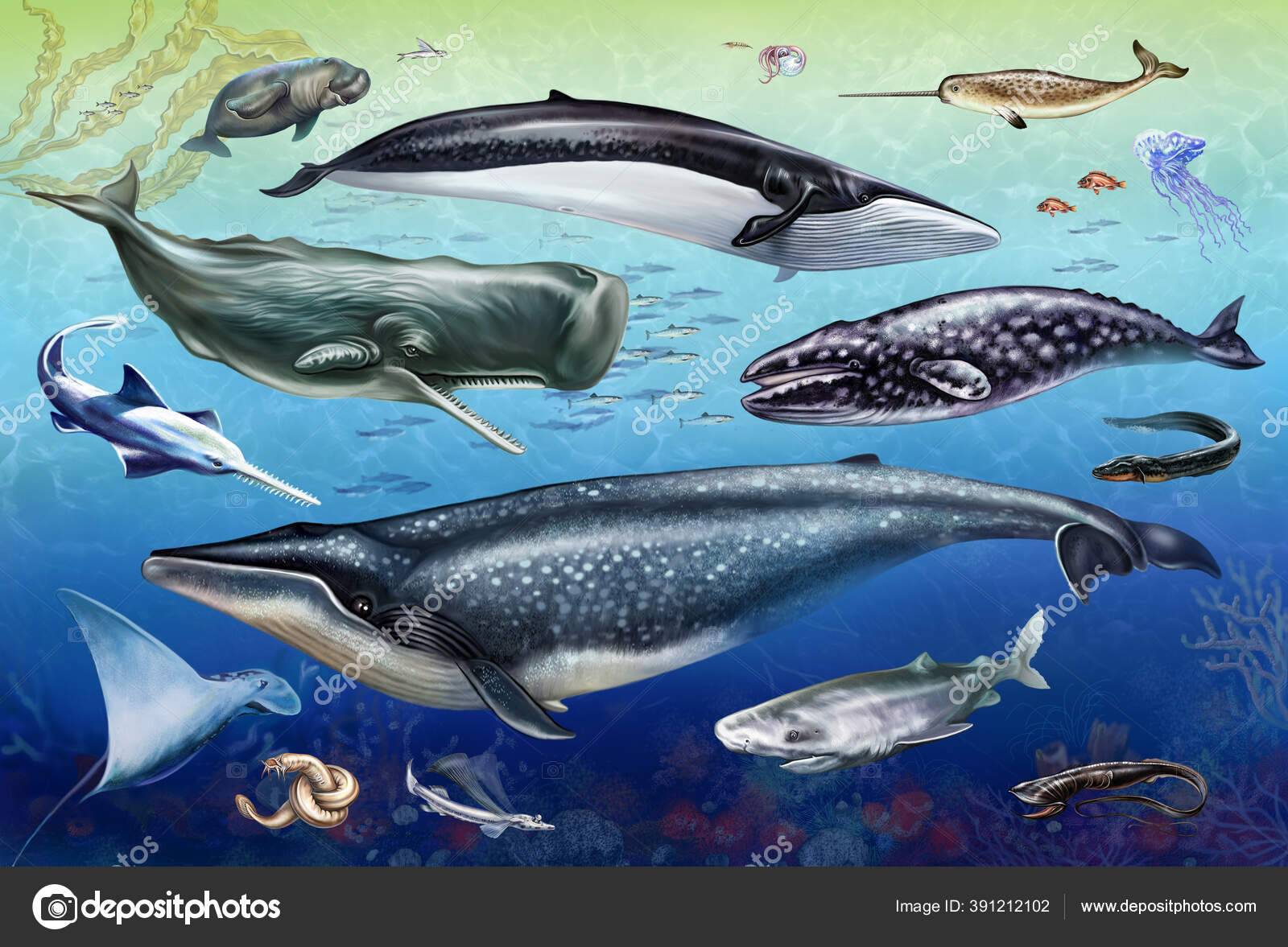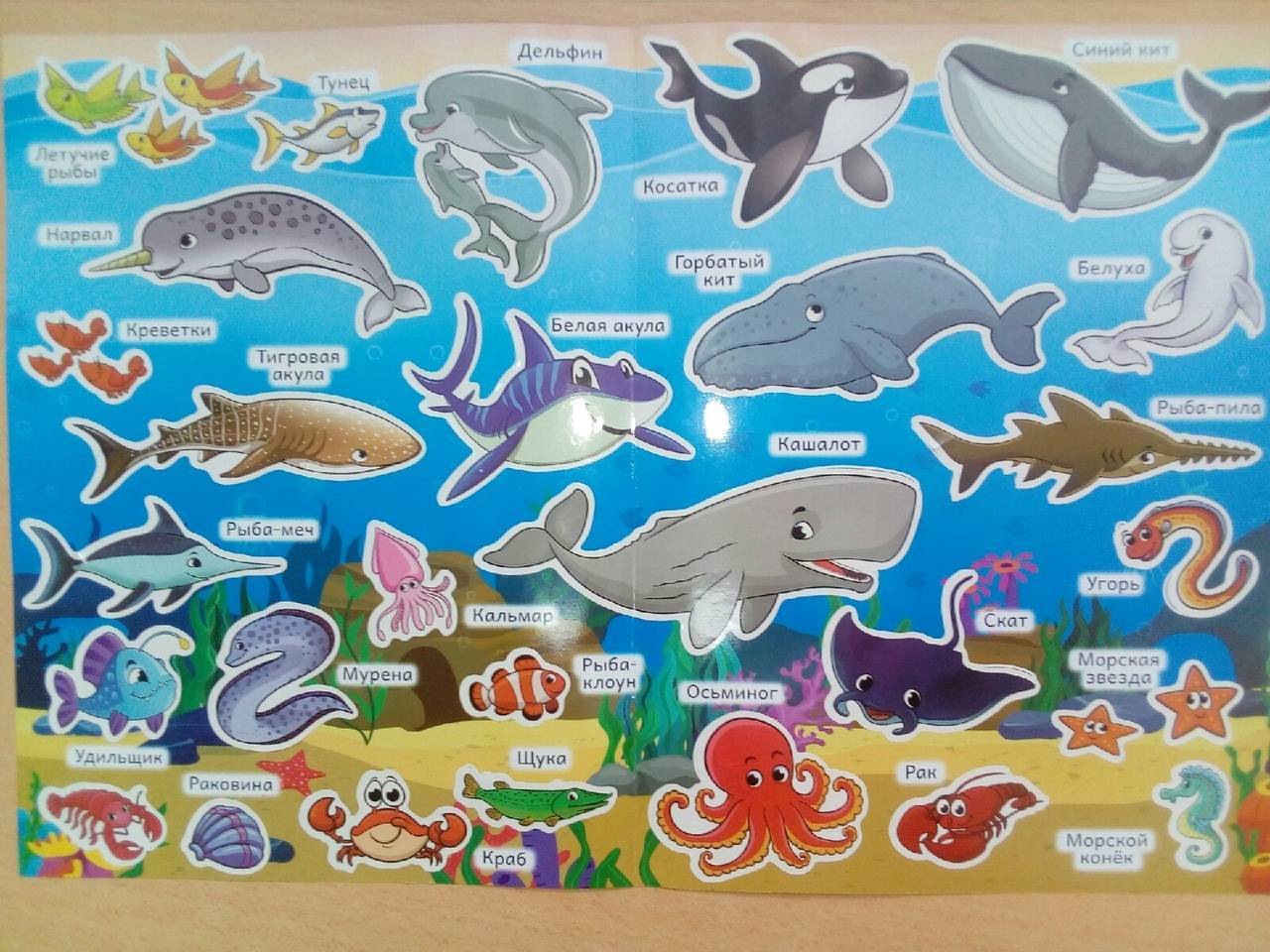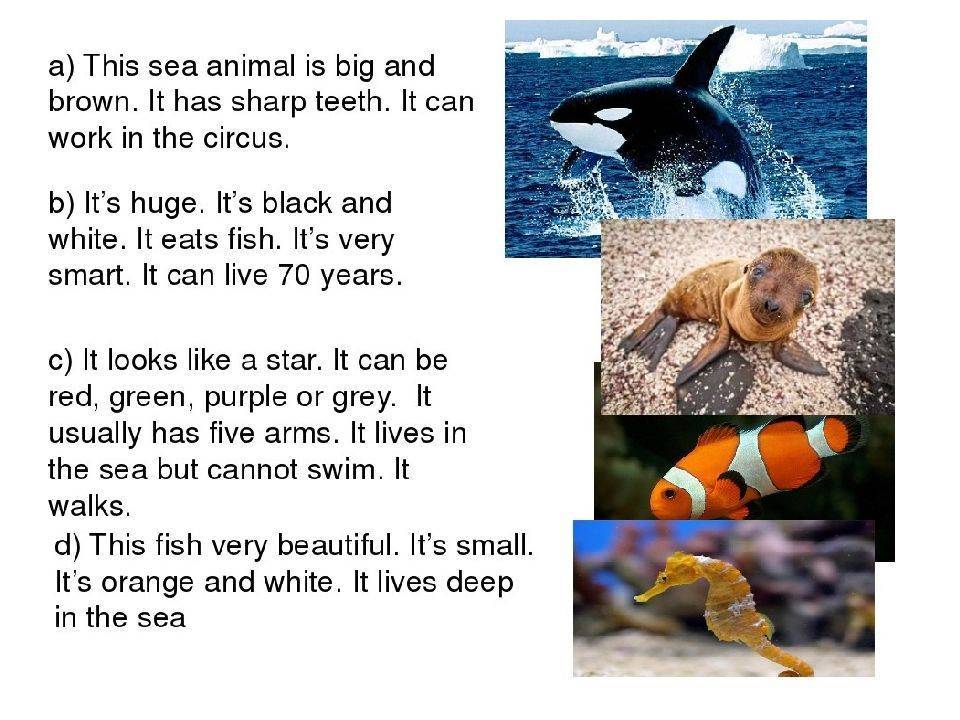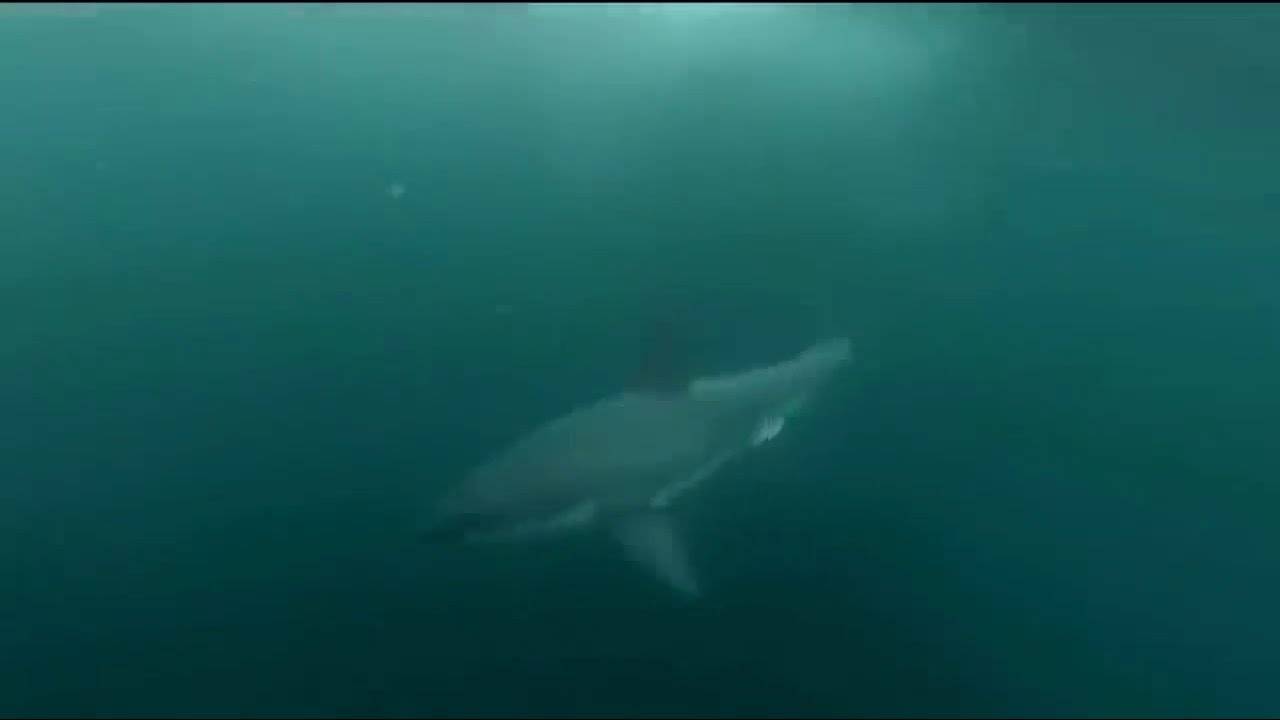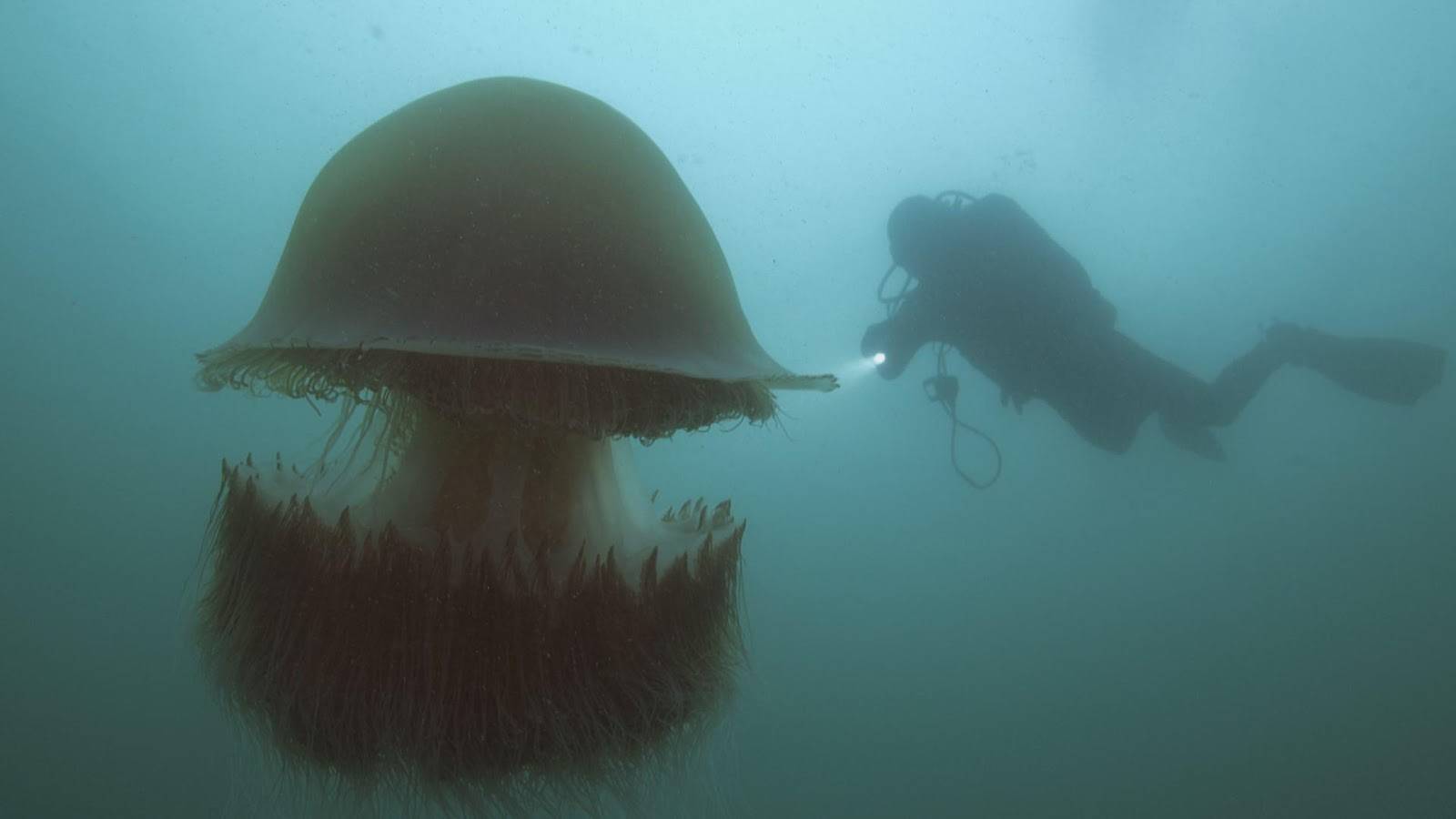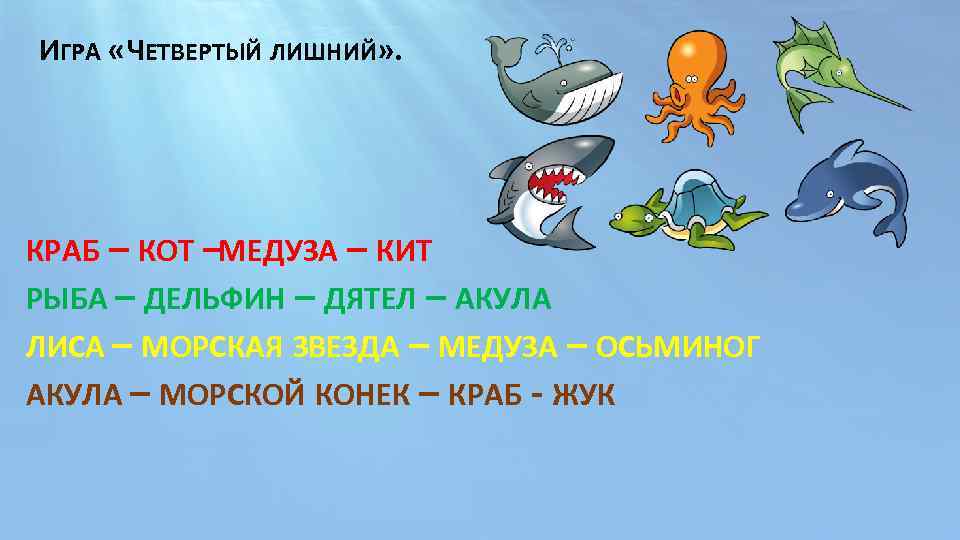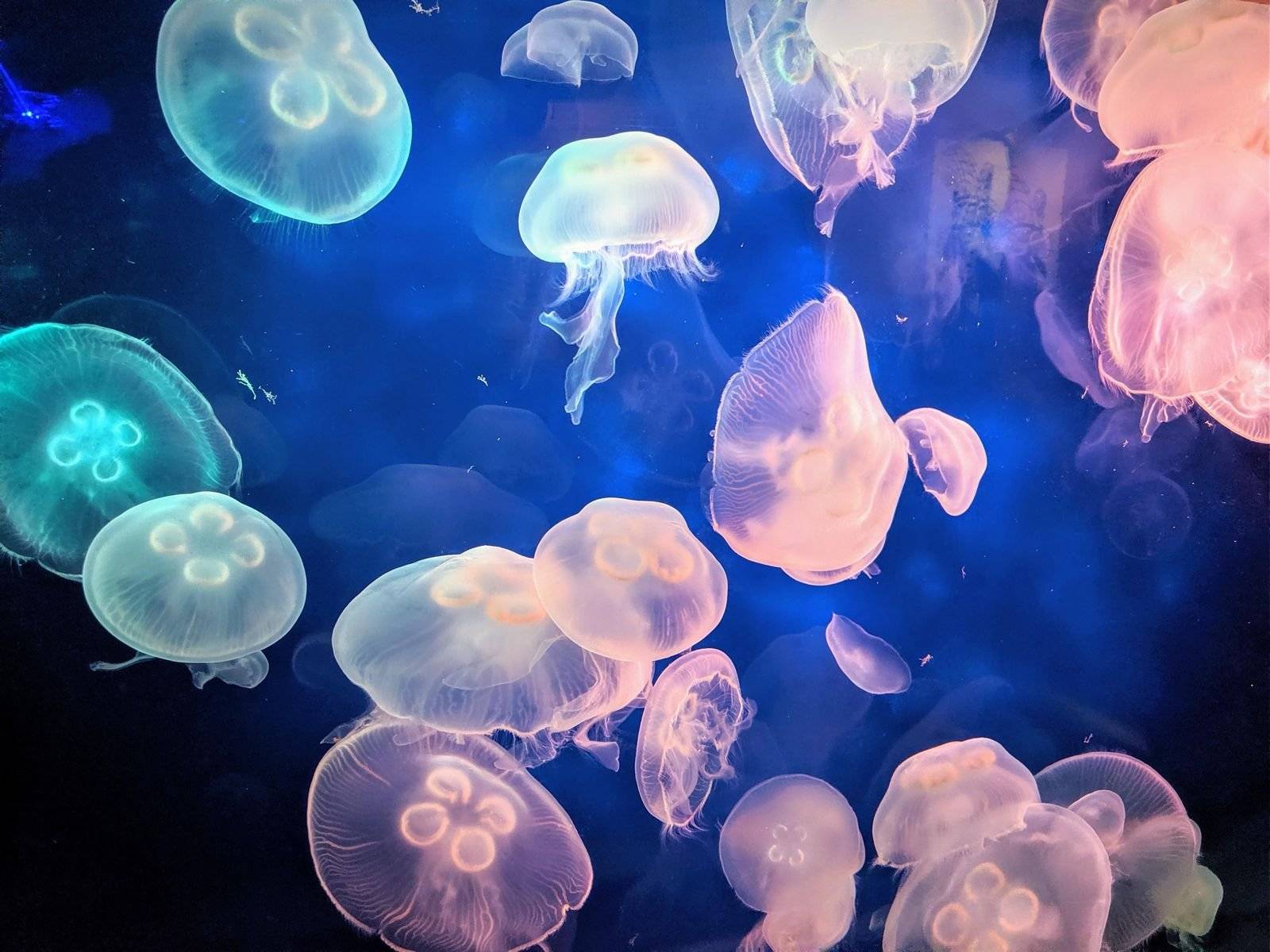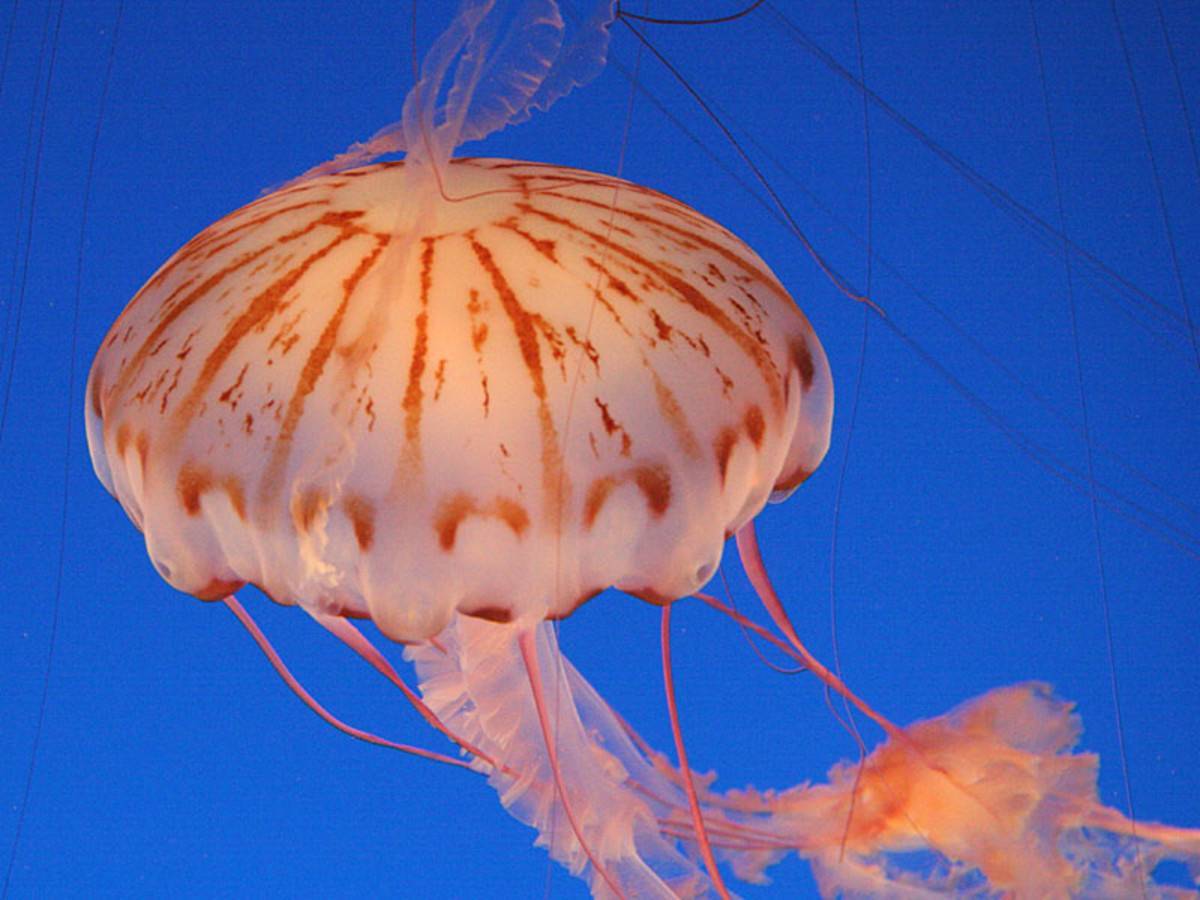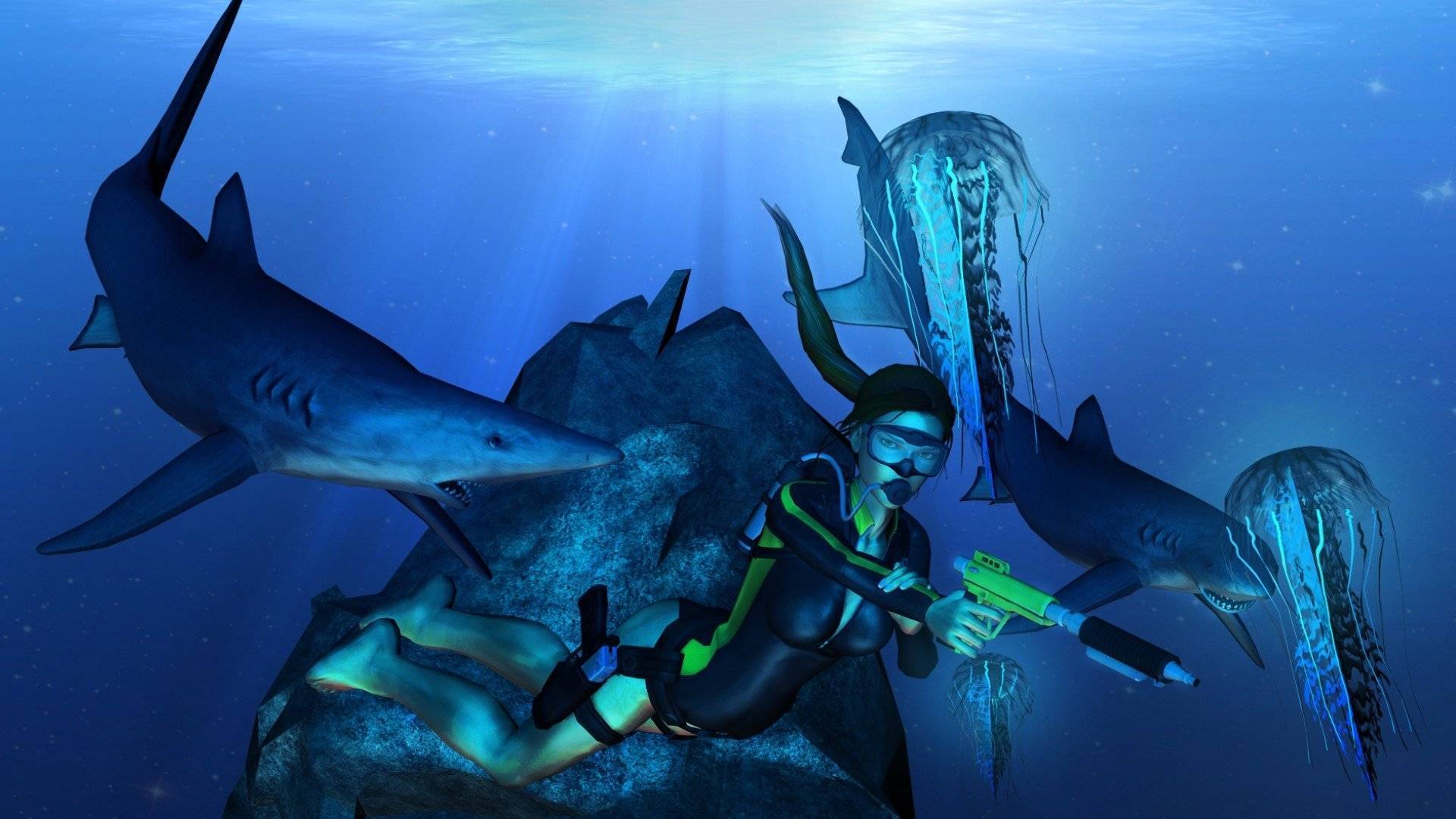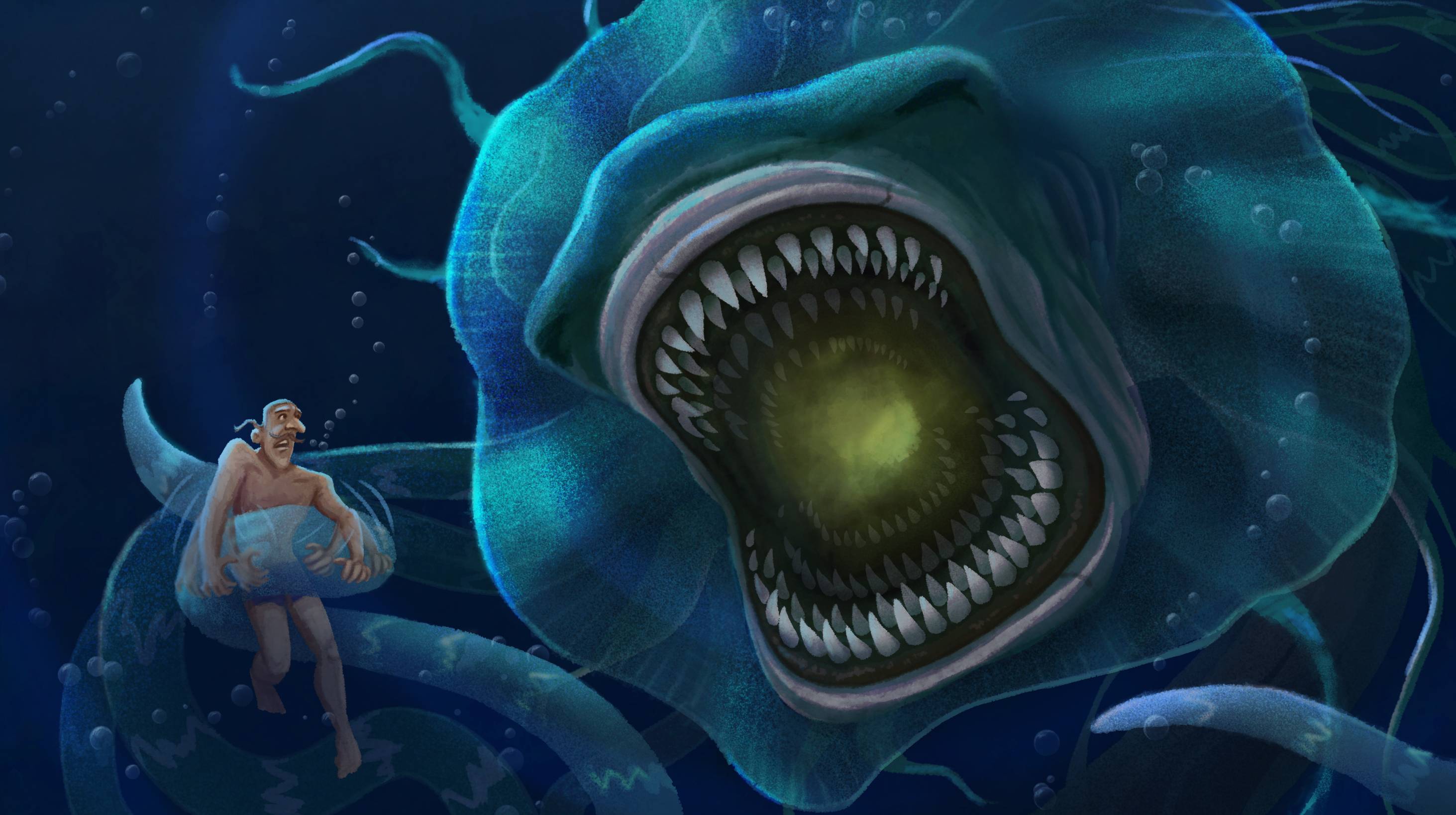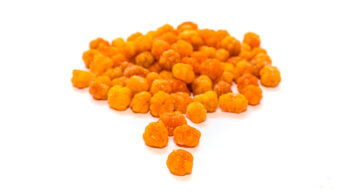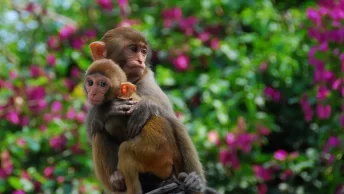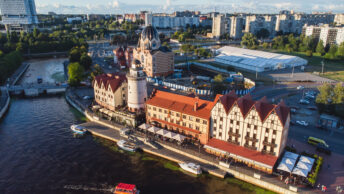Sea Lion
This California sea lion and the pup resting beside her are not related. A new study has documented evidence of adoption among California sea lions for the first time. (Image credit: Misuzu Toyama)
Really? Sea lions? Yes, because they’re very territorial.
They’re considered cute, trainable and are major attractions at zoos, but have been known to bite people.
In California, a spate of vicious sea lion attacks reported at Manhattan beach, Newport beach and San Francisco back in 2006 led to growing concern among caretakers and scientists. Some researchers suspect the sea lions may have eaten fish contaminated by toxic algae, which may explain the uncharacteristic behavior.
The city of San Diego warns on its web site “Like all wild animals, seals and sea lions are unpredictable and can become aggressive quickly. They have sharp teeth and may bite, particularly if cornered or harassed.”
Some Reassuring Facts
Unless you are deliberately seeking them out, you are very unlikely to see any dangerous animals in Australia, let alone come into contact with them, as hopefully these stats prove:
On average only around 3 people die each year from wild animal related incidents in Australia compared with about:
• 5 people who die in Britain in cow related incidents each year;
• 8 people who die in Australia in horse related accidents each year;
• 13 people who die global each year in vending machine related incidents;
• 58 people who die in Australia from falling out of bed every year;
• 285 people who drown in Australia each year;
• 715 people who die from slipping, tripping or tumbling in Australia per year;
• 1,500 people who die in Australia per year in road accidents.
Therefore you should be much more concerned about wearing your seatbelt and swimming between the flags, than snakes and spiders during your trip to Australia. The trouble is the media love to tell a story about a shark attack, as it sells newspapers – reporting 3 stories every day of someone tripping over and dying, isn’t seen as quite so compelling news.
Reassured yet? If you are check out 26 Things To Do On Your Trip To Australia, otherwise keep reading on.
Hippopotamus
Hippos may look like giant, bumbling things, but they are often considered Africa’s most dangerous mammal. They’re territorial, unpredictable, and armed with a mouthful of teeth sharp and strong enough to do lethal damage. If their territory is encroached—whether that be by a crocodile, another hippo, or boat full of tourists—they will aggressively defend their space. When hippos attack, they do so with canine teeth nearly 2 feet long at a pressure of 2000 pounds per square inch (a lion exerts half this much pressure when biting its hardest). As if that weren’t enough reason to steer clear, hippos sweat a red liquid that looks like blood, securing their title as most metal animal on the planet.
Where to find them: Their natural environment is the rivers and lakes of Sub-Saharan Africa—though they’ve also made their way to Colombia.
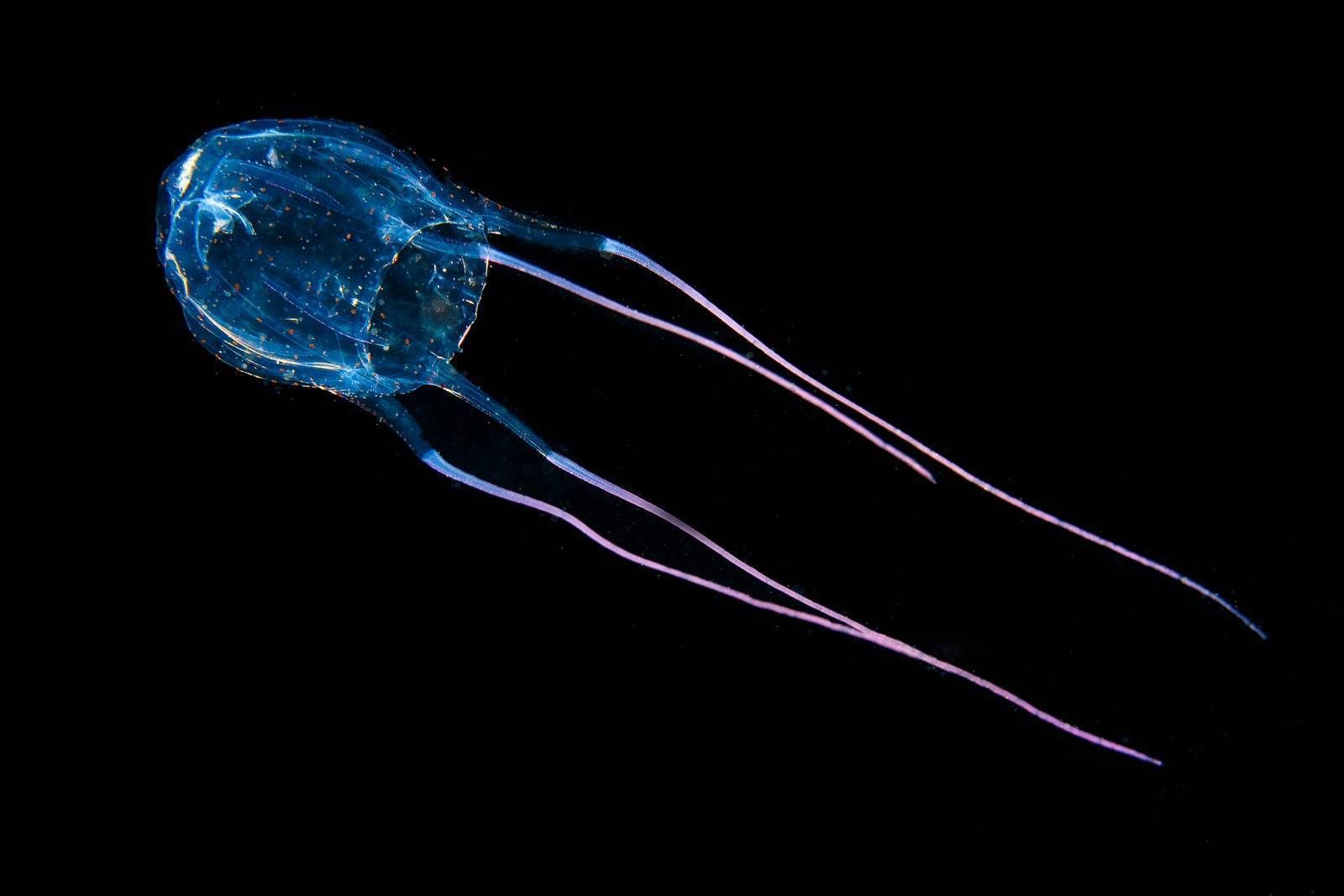
Getty
Humans
Surprised? After all, we’re animals too, and since we’ve been killing each other for 10,000 years, with the total deaths from war alone estimated at between 150 million and 1 billion (and that was a decade ago), it’s a no-brainer that we top the list. We assault each other with incredibly high rates of senseless brutality, from gun violence to terrorist attacks around the globe. We’re dangerous to other animals, too—think global warming, the destruction of forests and coral reefs, and overtourism, for starters. Given the threat we pose to countless other creatures—and the fact that we often act irrationally and have the capacity to annihilate our entire planet with a host of horrifying weapons like nuclear devices and genetically-modified superbugs—we are squarely atop the list as the most dangerous animal in the world.
Top dangerous animals in Vietnam: Red lionfish
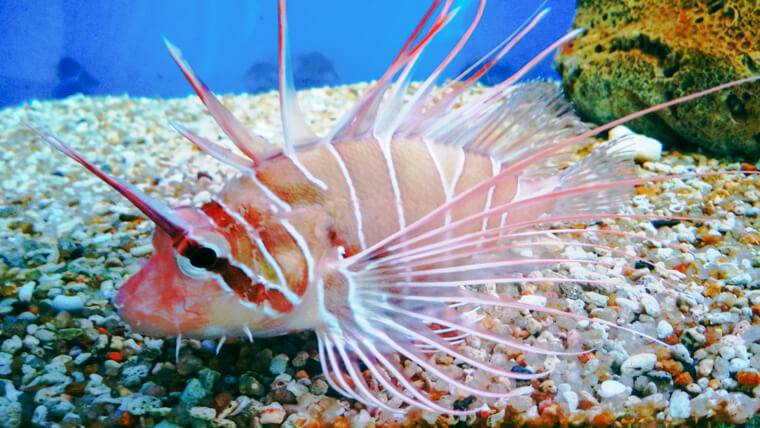
Red lionfish is also known as Pterois volitans – Source: wikipedia.com
Red lionfish have many different names such as zebrafish, turkeyfish, butterfly-cod, peacock lionfish, red firefish, or volitans, etc, which is relatively rare in Vietnam. They mostly live in coral reefs in the waters of Vietnam, which is outstanding with its colorful, beautiful, long and spreading fins which are actually huge poisonous spines, helping the fish thwart potential predators in the wild. The venom of these dangerous animals of Vietnam is released from 18 needle-like dorsal fins, which causes pain in the biting site and leads to some symptoms such as nausea, the shortness of breath, but the low chance of fatality.
There are the most dangerous animals in Vietnam, each of which has different characteristics and effects on both nature and humans’ health, so you should be careful of these species to protect yourself and others during your tours to Vietnam. If you would like to get more details about other species in Vietnam in particular and travel in Vietnam in general, do not hesitate to follow and accompany us to discover the amazing country via our website Local Travel Idea.
Jellyfish
Jellyfish are one of the most dangerous animals in Vietnam. Some of the most venomous ones that can be found in Vietnam are:
Fire jellyfish/ red jellyfish/ Physalia physalis
Physalia physalis features a long, thin body like “green plastic bottles”, which is transparent, making it very difficult to detect. They have tentacles containing iridescent venom which can be blue, pink, purple, or orange. Its venom is very strong, which can lead to wound necrosis and stimulate the release of histamine very quickly, triggering anaphylactic shock.
If stung by these dangerous animals in Vietnam, it can result in burning sensation, burning pain, body numbness, muscle weakness, sweating, fever and nausea, dizziness, shortness of breath, and kidney failure. This species is commonly found in the Northern seas like in Mong Cai City of Quang Ninh Province and Cat Ba Island; therefore, you should limit bathing in the area having many jellyfish to avoid the risk of touching it.
Wasp jellyfish/ Chironex fleckeri
This species can be found in the coastal waters of Vietnam, especially when the weather is bad and cloudy, they usually move to shallow water, near the shore. Its body is transparent blue, mixing with the color of the sea, making it very difficult to recognize. These dangerous animals in Vietnam are boxy, 2 to 20cm long and round like an upside down pot with 15 long tentacles and thousands of nematocysts containing venom, capable of attacking the cardiovascular system, peripheral nervous system and epidermis, which can cause cardiac arrest, leading to death. It is advisable for you to swim after storms, in the rainy season, high tide, and cloudy days.
The Official National (state) Animal of Vietnam
The official national animal of Vietnam is the water buffalo. The water buffalo is very important to Vietnam’s culture and history. Its docile and gentle demeanor allows it to be tamed easily, and it is widely used for farming and other work tasks. Water buffalos are so important to farmers in Vietnam that they are treated as a member of the family.
Water buffalos are considered endangered and are often hunted for their hide and horns. Natural predators of the water buffalo include tigers and crocodiles. They are herbivores and love spending time in the water. Aquatic vegetation makes up the majority of their diet.
Spiders
The two most venomous spiders in the U.S. are recluse spiders and widows. Despite its small size, the brown recluse is the most dangerous type of spider, with a bite that can develop into a necrotic ulcer capable of leading to gangrene and permanent tissue damage if untreated. This spider is also sometimes referred to as a “fiddle-back” because of the violin-shaped mark on its abdomen.
There are numerous species of widow spiders that live in the U.S. The black widow is the most notorious, given its recognizable markings and the dangerous bite of the female (as well as her habit of eating the male after mating with him). Thanks to anti-venom, the bite is not often fatal if medical treatment is sought out quickly.
Widows
- Size: .5–2 inches (with legs)
- Range: Most of U.S. (native to and more concentrated in southern states)
- Average Deaths Per Year: < 1
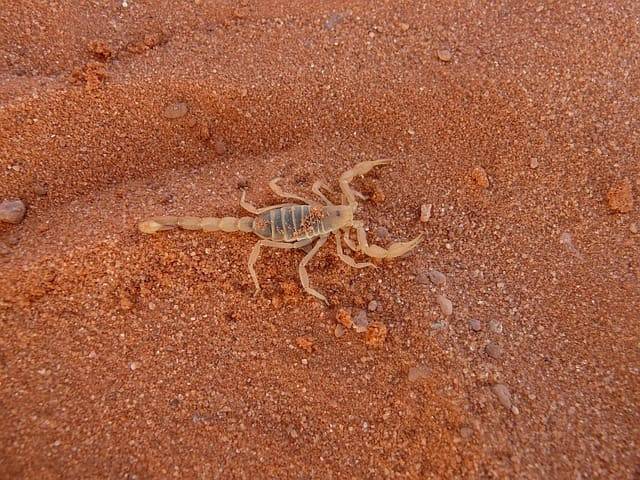
There are around 90 different species in the country, the most dangerous of which is the bark scorpion, which is most commonly found in the Arizona area.
Bees and Fire Ants
Africanized honey bees, sometimes called “killer bees,” are an aggressive type of bee that has resulted from the cross-breeding of African honey bees with other varieties. They are spreading up through the southern United States from the Mexican border.
Although there is widespread fear of killer bees, their sting is no more potent than that of a normal honey bee, and only one or two people die each year from stings. They are easier to provoke, faster to swarm, and attack in larger numbers than other types of bee, however, so they should always be respected when encountered.
Another insect to avoid is the fire ant, especially the red imported fire ant, which is considered by many to be the most aggressive species in the U.S. These insects can bite and sting if they think that their colony or food source is under attack. Their sting is intense, causing a painful burning sensation. A white pustule often appears a couple of days later. Very occasionally, there can be an allergic reaction. If this happens, hospital treatment should be sought.
Bees/Wasps/Hornets
- Size: < 1 inch
- Range: All of U.S. (Africanized honey bees only in south-central and southwestern U.S.)
- Average Deaths Per Year: 43–89 (includes hornets, wasps, and bees)
Fire Ants
- Size: 1/8–1/4 inch
- Range: South-central and southeastern U.S.
- Average Deaths Per Year: Unknown (but likely < 1)
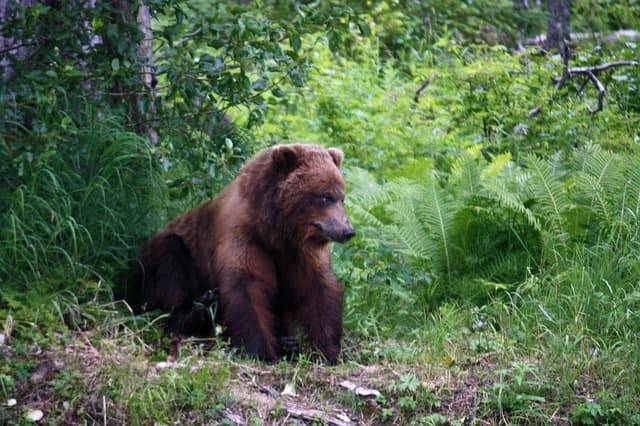
Once common, grizzly bears have dwindled in numbers. Black bears are the most commonly encountered. They are less aggressive than grizzlies but can be fierce if provoked.
Wild Boar
Wild Boar (also called pigs and hogs) arrived in the U.S. with Spanish explorers as farm animals. Some of them escaped into the wild and developed into a feral population.
These wild pigs should be treated with respect, as they are capable of being very aggressive, especially during mating season or if they believe their young are under threat. Boars will charge an intruder, usually to warn them off, but if contact is made, their tusks can cause serious wounds.
- Size: 99–220 lbs
- Range: Southern U.S., California, and small, scattered areas throughout the western U.S.
- Average Deaths Per Year: < 1
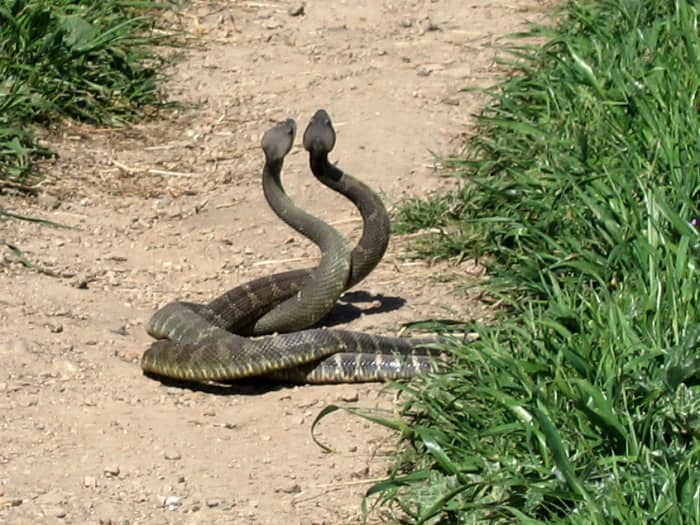
Two male northern pacific rattlenakes perform a “combat dance.”
Crocodile
Nile crocodiles are among the fiercest predators in southern Africa, yet their population has shrunk due to habitat loss and hunting. In another study, researcher Alison Leslie of the University of Stellenbosch found that climate change will also cause crocodile numbers to plunge. (Image credit: Oscar Baldomero.)
Saltwater crocs have earned a reputation as one of the wild kingdom’s most ferocious predators.
They can grow more than 20 feet long and weigh 3,000 pounds, and they have been known to hunt a wide range of prey, including monkeys, kangaroos, buffalo and even sharks.
Relying on purely brute strength, they are capable of dragging down water buffaloes and have occasionally victimized humans. Using an attack method known as the “death roll,” crocodiles kill their prey by latching on with their jaws and then taking down the dinner with a powerful, twisting roll. The technique is also employed to break apart large animals.
Fleas
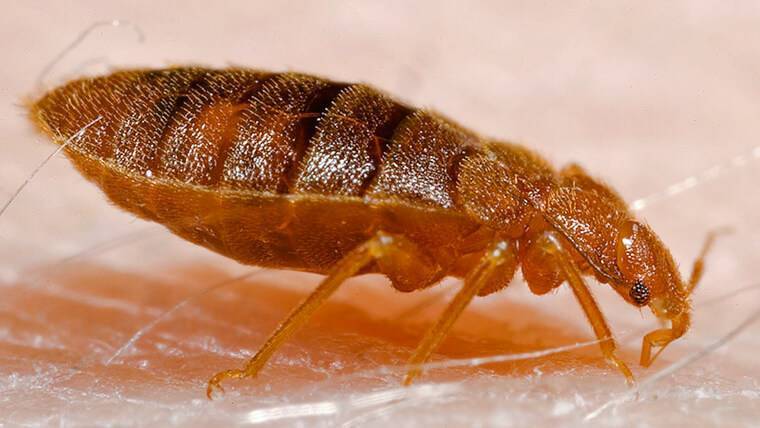
Fleas in Vietnam – Source: dietcontrungtphcm.net
Fleas are small, wingless blood-sucking insects, which mainly feed on animal blood. The most outstanding examples of this species of dangerous animals in Vietnam are the rat fleas, the human fleas, and the cat fleas. Their stings can lead to irritation, discomfort, and blood loss. Particularly, rat fleas are the main vector of plague and typhus, and cat fleas are the carriers of tapeworms. Fleas are mostly found in the fluff and furs of animals, in human beds and clothes. They move by jumping, some species can jump up to 30cm.
You may need: Is it safe to travel to Vietnam?
Humans are most often bitten by cat fleas, then dog fleas, and human fleas, which can lead to allergies and dermatitis. The more serious consequence of fleas is that it can transmit plague bacteria to humans, which causes the plague “Black Death”, the catastrophic outbreaks in the past.
Guar
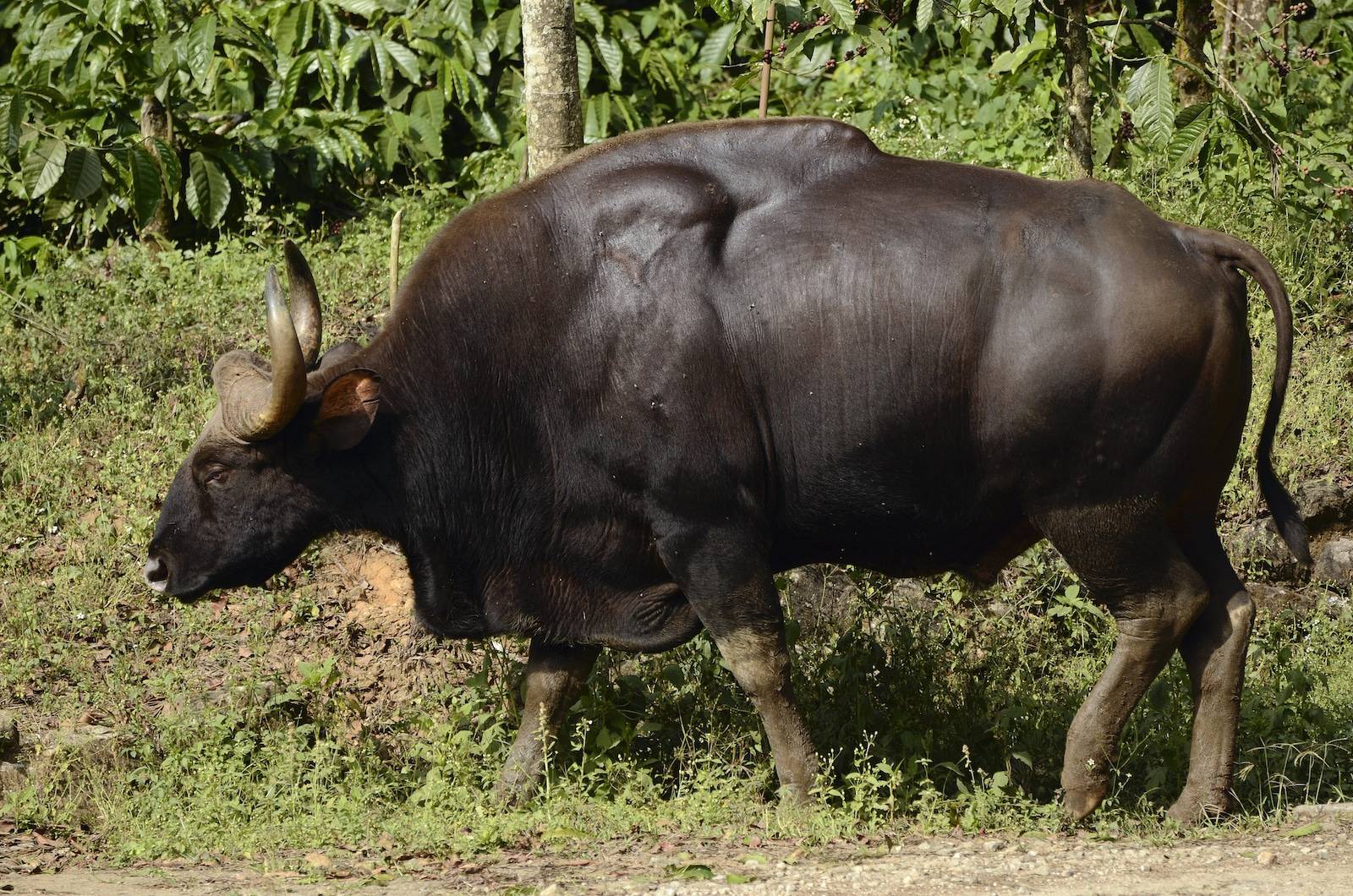 Indian Gaur from anaimalai hills. Photo:
Indian Gaur from anaimalai hills. Photo:
Funny enough, the Guar is generally a peaceful and easy-going animal, however, its sheer size and massive horns make it a risk factor for those that are in close proximity. They can weigh in at 1000 kg and during certain times of the year, like the breeding season, Guars have been known to charge at full speed at suspected predators.
They are known as southeast Asia’s bison and have the stature to match. In the remote mountain forests of Vietnam, small herds of Guar can be found. Unfortunately, they are one of Vietnam’s fastest shrinking land mammal populations.
So, What’s the Most Dangerous Animal of All?
This may surprise some people, but my vote for the most dangerous animal in the U.S. in terms of injuries and fatalities is not actually a wild animal but a common pet.
Each year, it has been estimated that as much as two percent of the U.S. population is bitten by dogs; that works out to around 4.5 million people. Around 16–39 people are killed by dogs annually. Pitbulls and Rottweilers are responsible for the majority of deadly attacks, but smaller dogs can be dangerous too, especially when it comes to babies and young children.
So while wild animals inspire fear in many, you are far more likely to be attacked or killed by a domestic dog than a wolf, bear, coyote, or other mammalian predator. As humans, if we respect and keep our distance from wild animals when in their vicinity, we are very unlikely to come to harm.
Comments
unnamed on August 18, 2020:
What about mosquitoes?
Yzan on March 13, 2020:
That dog above is abviosly wanting to play DUHHHH
nancy jarrett on January 01, 2020:
play dead with grizzly bears, but run, climb very high or fight back with black bears which would love to make a meal of you. the best thing is to make noise in bear territory and carry bear spray, or handgun for just in case the other things don’t work. and yes dogs being habitualized and untimid of most or even being timid hurt more humans than wild animals, there are more of them living with or close to us.
Martelli Macomber on December 06, 2019:
I don’t know where you got your info, but playing dead is often your ONLY chance of escaping a grizzly attack alive. That’s a quick lesson you learn – along with real life examples where the tactic worked – when you move to grizzly country (in my case, northern Wyoming adjacent to Grand Teton National Park).
You can look up the details of an attack involving a couple from San Francisco visiting Yellowstone National Park a few years ago in which the bear killed the husband as he ran but let the woman be after she played dead (injured, but alive).
While young bears may mock charge, adult bears generally attack to cripple or kill and generally don’t retreat until they feel they have eliminated the ‘threat’.
You fight back with an adult grizzly and it’s going to be a darn short one – and you aren’t gong to win it!
Hayden Coombs on November 16, 2019:
Quote from a article that used facts rather than opinion- Wrong. It turns out that “other mammals,” a bucket category covering everything from cows to horses to raccoons, were the most dangerous on the list, causing 1.7 deaths per 10 million people every year. (Other research has shown that most of the deaths in this category involve farm animals like cows and horses.) Hornets, wasps, and bees were slightly less deadly (1.4), and dogs came in next at 0.8.’ (Per the CDC)
Michael Hartsook on October 20, 2019:
Like you said main reason most people get bitten by a snake is by handling them or trying to catch one, I was born and raised in east Tennessee and still live here. Growing up I used to catch snakes all the time in the woods and wetlands plus there was a creek that ran through the neighborhood and i caught water snakes non venomous one,s.i caught black rat snakes corn, snakes garter snakes and caught a copperhead, or two, i had got bitten a time or two by a black rat snake and a Garter snake which was my fault every snake I caught I would turn them loose and not harm them, back in September of 2007,i was in the mountains and was trying to catch a copperhead and got bitten on the thumb when it bit,me it didn’t hurt but after my hand swelled up it hurt all the way from my hand to my elbow, i spent 24 hours in the hospital and the doctor said it was a dry bite heck i would have hated to see what a real bite was like I could see the venom on my thumb where the bite marks were on my thumb. That was my fault for trying to catch it.
Realist on July 14, 2019:
The most dangerous animal in North America are humans; just ask the people in Chicago!
unnessecary name on February 01, 2019:
thanks! this really helped out for my presentation!! I can’t believe the most dangerous animal as in the one that kills the most are dogs!!
gjdkfdjsf on July 27, 2015:
i cant believe that a beloved pet is the most dangerous animal in the US
Ronald E Franklin from Mechanicsburg, PA on February 07, 2014:
Well written hub with some good advice on how to protect yourself. I enjoyed reading this. Voted up.
White-lipped pit viper
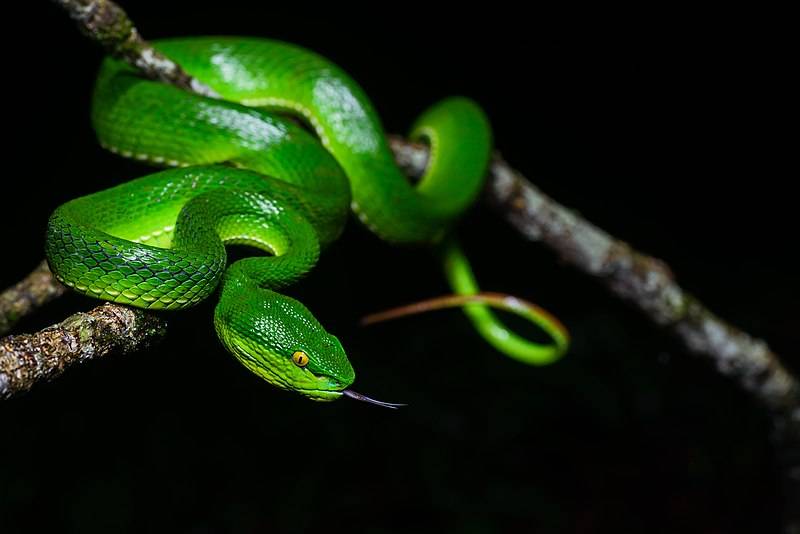 Photo credit: Rushen @ Wikimedia
Photo credit: Rushen @ Wikimedia
Woe to the person who comes into contact with the white-lipped pit viper. This grass-green slider is one of the most venomous snakes in Vietnam. It’s found in the wetlands, the bush, and among the bamboo blooms near the wiggling riverways all across Southeast Asia, but has a habitat that also extends as far afield as the Himalayan foothills in Nepal and the mountains of north-central China.
Commonly found at: Bamboo forests and riverways.
Average Length: Around 60 centimeters
Average weight: Unknown
Life cycle: Like many other species of viper, white-lipped vipers hatch inside of their mothers and are birthed live when they have fuel themselves with yolk. From birth, white-lipped pit vipers will hunt.
Diet: Rodents, lizards, birds and frogs
Cultural significance(if any): The white-lipped pit viper is described as one of the ‘classic’ pit vipers of southeast asia and was first spotted in 1842.
The species sports the trademark triangle head that’s common across the viper genus. Males tend to grow to around the 60cm mark, while females are generally longer. But, surely, its most striking feature is its colouring. A bright, lush, glossy green streaks along the top of the snake, while there’s a yellowish tinge that gives way to blazing mustard eyes with a brooding black dot right at their centre.
Although fatal bites from the white-lipped viper are relatively rare in humans, there’s no question that this resident of the jungles can do some damage. It’s got a strong procoagulant venom that interrupts proper blood flow and causes huge swellings and localised blister formations. Effects can last several days after the initial bite and cause intense pain sensations at and around the site of contact.
Where to eat Jellyfish Noodle in Nha Trang?
1. Bun Ca Co Ba
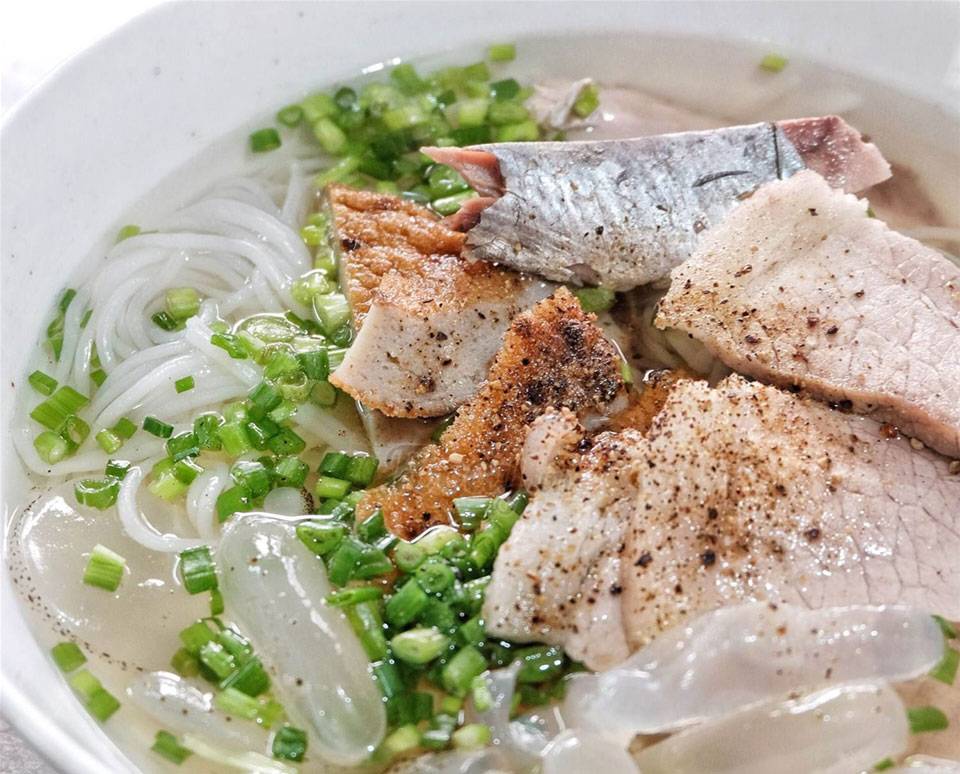
Address: 123 Yersin, Nha Trang
Opening hours: 06:00 – 11:00 & 15:00 – 21:00
This is a popular restaurant with high quality. The broth is not too thick. Fish are always delicious and fresh. Jellyfish are crispy. Big bowl costs VND 25.000, small one costs VND 20.000 and special bowl with more fish costs VND 35.000. Iced tea is served for free. Staff are friendly.
2. Bun ca Min – Bun ca Ninh Hoa
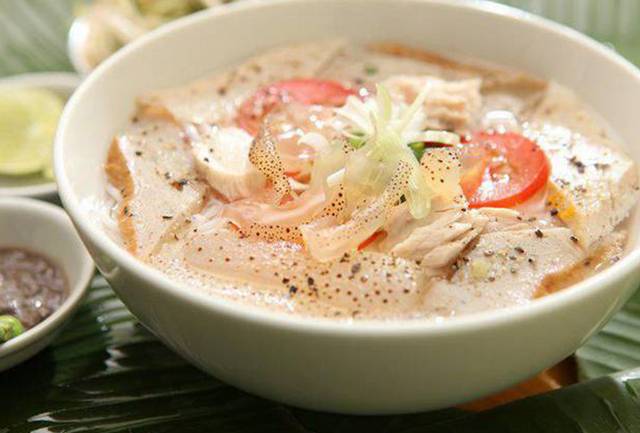
Address: 170 Bach Dang, Nha Trang
Opening hours: 16:00 – 21:00
This place is popular to locals as it has been serving for quite a long time. A big bowl with fish, fish balls and jellyfish costs VND 35.000. Broth is sweet and rich in flavor without MSG. The restaurant is not too big, so it will be more refreshing if you sit outside. Iced tea is reviewed to be surprisingly tasty.
3. Bun ca sua Yersin
Address: 87 Yersin, Nha Trang
Opening hours: 9:00 – 21:00
Jellyfish noodles here have fish balls, jellyfish and mackerels. Jellyfish and fish balls are extremely delicious. The broth is clear and sweet. If it’s not salty enough, you can add fish sauce. The owner is fun.
4. Bun ca sua Tang Bat Ho
Address: 3 Tang Bat Ho, Nha Trang
Opening hours: 6:00 – 10:30
The staff is enthusiastic and friendly. They deliver excellent customer service that will impress you for sure. A full bowl costs VND 30.000. The texture of fish balls is perfect. Jellyfish are crispy and tasty to dip in sweet and sour sauce made from shrimp. La Han Qua ginseng tea is also served.
5. Quan Cay Bang – Bun ca La Dam
Address: 6 Han Thuyen, Nha Trang
Opening hours: 06:00 – 24:00
It is said this restaurant serves the original Nha Trang jellyfish noodles. A full bowl has different types of fish, fish balls and jelly fish.
Mosquitoes
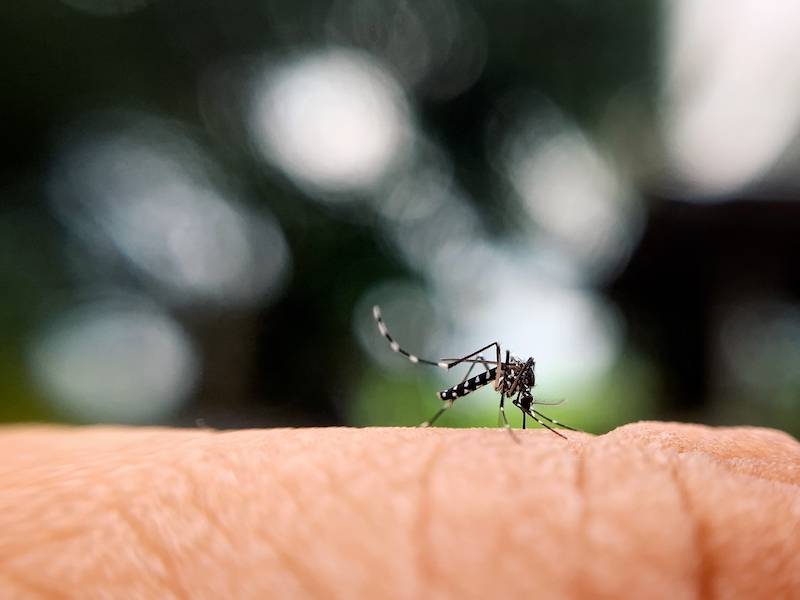
Photo by twenty20photos from Envato Elements
- Latin name: Culicidae
- Attacks: Bite and subsequent infection from tropical disease
- Treatment: Anti-malarial prophylactic, DEET spray, anti-mosquito spray
- Where you find them: All over Southeast Asia, but often close to open bodies of water
- Conservation status: Least concern
An often silent yet lethal killer, the mosquito is probably one of the most dangerous animals in Vietnam that’s regularly overlooked by travelers. Don’t forget about them! They are much more than just a buzzing irritation that can be waved away at the brush of a hand…
Throughout Vietnam, and many tropical and sub-tropcial corners of the planet besides, mosquitoes are often the primary vectors of dangerous diseases. The most famous of them is probably malaria – a potentially fatal disease that’s caused by the bite of mozzies infected with a particular parasite. Contract that and you’ll be shivering and sweating with some of the most hardcore flu-like symptoms going. But the dreaded M isn’t the only thing. In fact, many Vietnamese locals are more wary of dengue fever, which also causes high temperatures, partial paralysis, and sometimes hallucinations.
There is no knowing which mosquito is a carrier of a disease. The best way to dodge them is to protect yourself from all bites and . Our recommendation? Be sure to pack a reliant repellent that contains DEET for the best results and always try to cover your arms and legs at key times of the day – the evening and early morning especially.
| Mosquito-borne disease | Symptoms |
| Dengue fever | Rash, fever, headache, easy bruising, bleeding gums |
| Zika virus | Fever, rash, joint pain, red eyes |
| Malaria | Fever, headache, chills, vomiting |
| Yellow fever | Jaundice, headache, backache, chills, vomiting |
Seek medical attention if you have any of these symptoms with mosquito bites
Top 7 dangerous animals in Vietnam: Venomous snakes
Vietnam has many types of venomous snakes, some of which can be mentioned as:
Red-tailed vipers or Trimeresurus albolabris
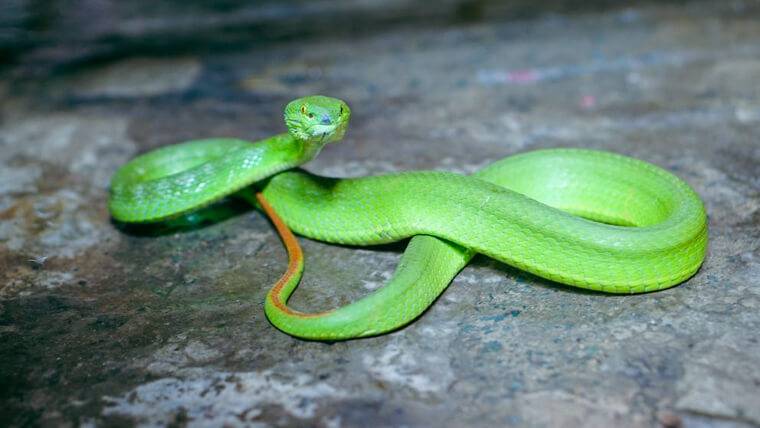
Red-tailed viper – Source: nguoiduatin.vn
Red-tailed viper is a scaly species of snake in Vietnam which has a scientific name of Trimeresurus albolabris with a length of about 60 to 100cm and a weight of about 300gr, characterized by green body and reddish-brown tail. They usually reside on the ground and rest in trees during the day. This species can be found in mountainous areas and forests in Truong Son mountain range, the Northwest of Vietnam, some in the province of Can Tho, Quang Ngai, and Nghe An,…
Because the vision of these dangerous animals in Vietnam is very poor during the daytime, they often go out to hunt at night. This is a ferocious and extremely poisonous snake among vipers species. If bitten by this species, the poison with more than 20 deadly components will be transmitted to the body of the victim, leading to hemolysis, edema, neurotoxicity, or even heart failure.
Azemiops feae
This is one in a few species of viper living at a height of about 1,000m above sea level, commonly found in Fansipan mountain and other mountainous areas in the provinces of Cao Bang, Lang Son, and Vinh Phuc. The species of dangerous animals in Vietnam is ranked as in the top 60 most venomous ones in Vietnam, which can produce neurotoxins and cytotoxins, extremely dangerous to humans.
The most bizarre and terrifying feature of this 80cm long species is its silver-white head and red-black bands on the body. On the head, there are two large black lines running vertically, symmetrically through a pink-white line.
Horned viper snake – top dangerous animals in Vietnam
Horned viper or Trimeresurus cornutus has other names such as Devil snake and Satanic snake because of its scary appearance. This is one of the most deadly snakes in Vietnam, which has unique features. They have scales on their eyelids developing into a pair of horns, which makes the head a strange shape. The head of the snake has a triangular shape, the eyes are small and convex. The average length is about 50cm, featuring brownish – gray with dark symmetrical patterns which closely resemble the color of dead branches and rotting leaves.
These dangerous animals in Vietnam appear in several places such as Sapa Town (Lao Cai Province), Bach Ma National Park (Hue City), Phong Nha – Ke Bang National Park (Quang Binh Province), and recently in Cuc Phuong National Park (Ninh Binh Province). This species is usually found in the lush rainforests, limestone mountains, and granite outcrops.
King Cobra
King cobra is the world’s longest venomous snake and is a dangerous species, which is up to 5 to 5.5m and 9 to 12.5kg heavy. Its skin color is different depending on its natural habitat, the skin from the head to the back varies from black, tan, olive-brown to brownish-grey or brownish – white. The belly part of these dangerous animals in Vietnam is pale yellow with fine scales, the neck is bright yellow. The upper jaw features a pair of fangs helping it capture prey and inject the venom. The neck is characterized by folds of loose skin on both sides, helping it to stretch to the sides. The eyes of this species are very bright, making it observe the prey from about 100m away. Although it does not have external ears to hear, it can still receive the sound through extremely sensitive skin.
The venom of the king cobra is a group of neurotoxins, which is incredibly murderous to victims, causing serious consequences such as blurred vision, drowsiness, eye sore, dizziness, paralysis, respiratory failure, kidney failure, or even death after about 30 minutes.
Top dangerous animals in Vietnam: Sea snake
Sea snakes usually live in muddy areas in the bottom of the sea, around islands and estuaries. They have a small head and eyes, a slightly flattened body, a flattened tail, and the nostrils which move up to the tip of the snout. The toxins of this species of dangerous animals of Vietnam can cause serious consequences to circulation and nervous systems, which can destroy muscle cells, leading to paralysis of the respiratory muscle, even death.
If bitten by this species of dangerous animals in Vietnam, you will not feel pain at first, just a mild pain and itching at the bite site. But after that, numerous symptoms appear such as muscle pain, tongue numbness, sweating, dysphagia, muscle paralysis, shortness of breath, dilated pupils, cold skin, respiratory paralysis, coma, and finally death.
The largest number of sea snakes is distributed in the Central region of Vietnam such as Binh Thuan Province, Ninh Thuan Province, Khanh Hoa Province, Quang Nam Province, Quang Binh Province, and Nghe An Province, etc.
Man
Humans are the biggest threat to vacations in Vietnam. There are severe penalties for locals ‘attacking foreigners’ but ‘ripping them off’ is less severe.
Thieves, Pickpockets & Beggars
There is a blight in Vietnam with which the government can do nothing about. Bag snatching, pickpockets, and room or home burglaries statistics are through the roof.
Many bag snatchings’ are carried out by two people on mopeds. Pickpockets in Vietnam have become experts and also work in pairs or gangs.
Big cities such as Hanoi and Ho Chi Minh City attract most thieves because of the amount of tourists that visit them.
As people arrive at the airport until the time they leave, they are constantly targeted. Beggars are virtually everywhere within the main cities. Many are part of a gang and American and British tourists are considered to be walking cash machines.
Tourist Warning: Express Kidnapping – free link

Traffic Jams
Cabbies & Traffic
It is alleged that many cab drivers rip off tourists. The usual trick of over-charging and going the long way is just the tip of the iceberg.
Organized crime including selecting victims to be robbed at a later time, and taking clients to ‘out of the way’ areas to be mugged are also problems in Vietnam.
The traffic is horrendous as is the choking fumes at street level. Many drivers ignore the road signs, traffic lights, and any other type of vehicle control methods.
Vietnam has the highest number of traffic related deaths in the world.
Passports will need to be handed into the hotel on arrival. This is so you can easily leave the country even if you have been robbed of everything else.
Always be alert at every stage on your vacation.

Police Corruption
Like many other countries, some of the police in Vietnam are receiving backhanders. Pulling over unsuspecting tourists and fining them for different traffic violations is the typical method.
In some cases the hire vehicles have been impounded until an amount of money is paid in cash.
Upon approaching the legitimate police, it is often discovered that there is no record of a violation, impounding, or money received for any fines.
The Most Dangerous Animals In Vietnam Today
The dangerous animals in Vietnam mainly come in the form of venomous snakes. There are several species of venomous snake in Vietnam, including the king cobra, many-banded krait, white-lipped pit viper, and the Malayan pit viper. Of these, the Malayan pit viper and the king cobra are the most aggressive and most likely to stray into human territory.
Vietnam is also home to saltwater crocodiles, which are the largest living reptiles in the world. The specimens found in Vietnam tend to be larger than average. However, the good news is that they are largely extinct in Vietnam. They mainly live in the northern wetlands near China.
Vietnam has a few dangerous insects in the Vietnamese giant centipede and the mosquito. Malaria and dengue fever rates in Vietnam tend to be quite high. The giant centipede is mainly found in jungles, but it’s fairly aggressive and contains neurotoxic venom.
Back in time
First, we need to go back 180 million years. At this time in history, Africa, South America, India, Australia and the Antarctic were all joined together. This land mass gradually split apart, with Africa and South America breaking off first, followed 40 million years later by India and Madagascar. Australia and Antarctica finally broke apart around 100 million years ago.
Today, venomous snakes are found in all of these places – apart from Antarctica, where it is too cold for them to live. On the original combined land mass, it is thought that there was a population of ancestral snakes that was venomous. These were separated when the land masses broke apart.
Curious Kids is a series by The Conversation that gives children the chance to have their questions about the world answered by experts. If you have a question you’d like an expert to answer, send it to curiouskids@theconversation.com. We won’t be able to answer every question, but we’ll do our very best.
Whereas other continents currently have several different types of snakes, Australia’s snakes belong almost entirely to one group, called elapids. These are a group of snakes that inject their prey with venom from hollow, fixed fangs.
Other continents have several ancestors that may or may not have been venomous, but Australia’s 140 terrestrial and 30 marine snake species all evolved from one venomous ancestor.
